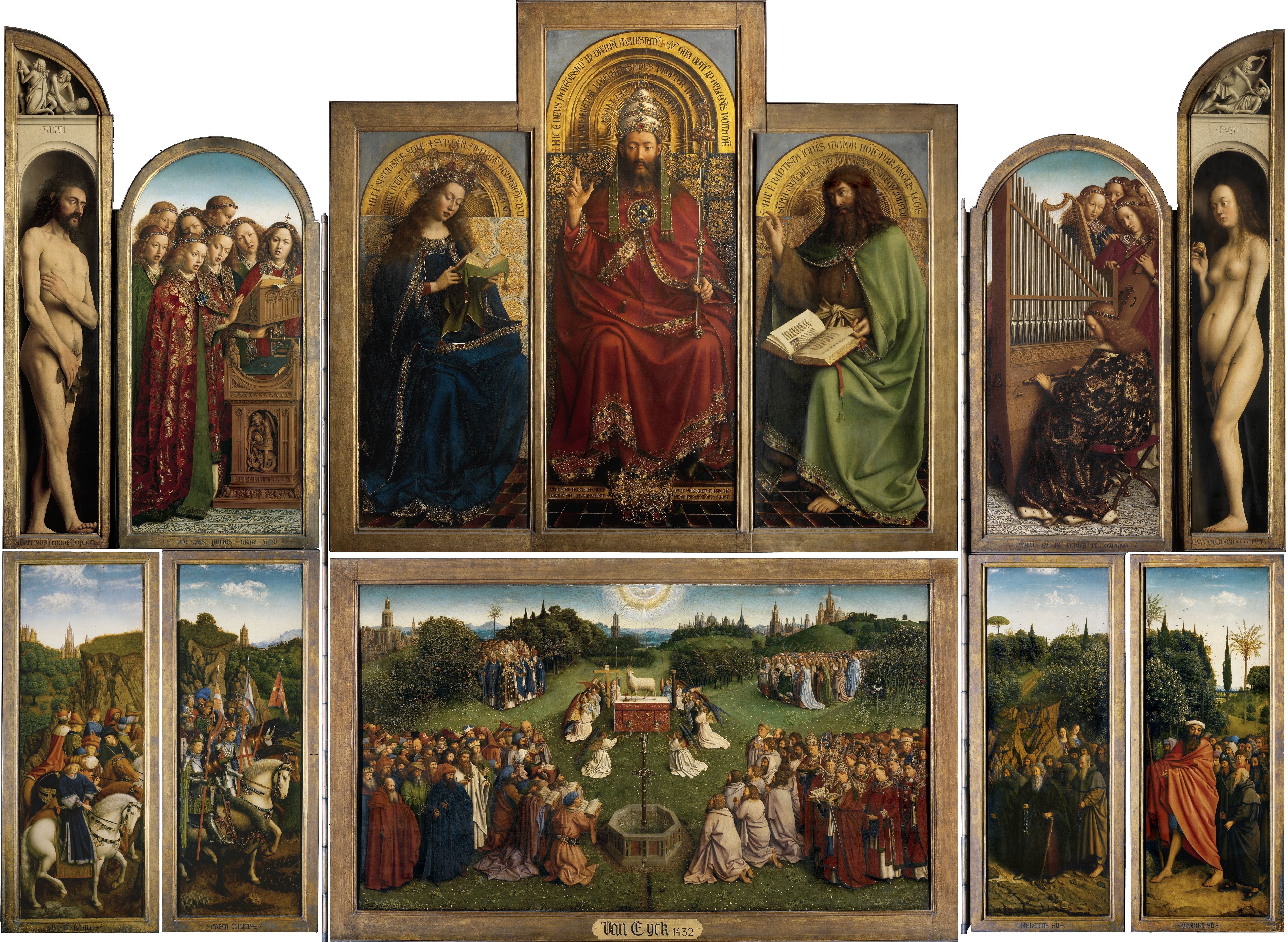The Ghent Altarpiece is a huge painting that adorns the altar of St Bavo's cathedral, Ghent, Belgium. Measuring 11ft x14ft overall, it consists of 12 foldable oak panels depicting biblical themes. Conceived and created by van Eyck brothers Jan and Hubert the work was completed in 1432. The lower middle panel " Adoration of the Mystic Lamb" unifies the entire work.
Renaissance artists like van Eyck brothers the mostly used mineral pigments. For example goethite a mixture of iron oxide-hydroxide with a sprinkle of manganese went by the name brown ochre or brown earth. Green earth was glauconite/celadonite a complex mixed silicate of aluminium, iron, potassium and magnesium. Red ochre was hematite dehydrated iron oxide. Yellow ochre, which is hydrated iron oxide could yield bright yellow to orange. For deep orange artists used orpiment, arsenic sulphide. Ultra marine blue was the costliest colour obtained by grinding lapis lazuli and extracting the powder with water. Azurite was also used for blue. And for black either carbon black from soot or peach stones charred and ground to a fine powder were used. Working with oil paints artists might have instinctively and intuitively discovered the extra dimension glaze added to the painting.
 |
| Ghent Altarpiece: Panels open (courtesy: wiki) |
The Ghent altarpiece has aged through rough times. Hence it is possible that it might have undergone
several cycles of restore/reconstruct/repair. How to get down to the innermost layer of paint laid down originally by van Eyck brothers almost six hundred years ago? University of Antwerp, Royal institute for Cultural heritage, Brussels and the University of Ghent brought their scientists together and thus began a project on the detailed analysis of the The Ghent Altarpiece. A recent issue of Angewandte Chemie International edition(1) carries their probe analysis. Dr van der Snickt, corresponding author of the paper is with the dept. of chemistry, University of Antewerp, and his research area is conservation and restoration of heritage art. Dr Snickt uses modern analytical tools which are non-invasive such as Macroscopic X-ray fluorescence(MA-XRF), secondary electron microscopy- energy dispersive X-ray analysis(SEM-EDX), and synchrotron radiation based micro-XRF(SR-- muXRF). These are basically chemical imaging techniques and specific to each element. In other words elements yield their characteristic signature pattern. Hand-held scanning devices were used to image the entire surface. 16 billion spectra were thus collected, processed and analysed. They also analysed the cross section of a tiny speck of paint layer by layer. They discovered the yellow varnish layers underneath large areas which have been overpainted. They also observed that damaged spots in the original painting have been filled out with iron containing putty like material and then painted over. Since advent of organic dyes in 18th century pushed out mineral colours, the team could also get a rough idea when repair/restoration were carried out.
 |
| Ghent Altarpiece: Panels closed (courtesy wiki) |
Tailpiece:
The lower left panel depicting the Righteous Judges has been missing for decades. A copy created by Jef Van der Veken stands in its place. In Albert Camus' novel The fall, Clamence boasts that the original is in his possession. He won't return it because none misses the original all are happy with the copy also because innocent lambs and righteous judges no longer exist in modern times.
REFERENCES:
1. Large-Area Elemental Imaging Reveals Van Eyck's Original Paint Layers on the Ghent
Altarpiece (1432), Rescoping Its Conservation Treatment
Geert Van der Snickt et al, Angewandte Chemie International Edition
Volume 56, Issue 17, pages 4797–4801, April 18, 2017